A study recently completed by Gulf Watch Alaska researcher, Heather Coletti, and colleagues looked at Pacific razor clams in Lake Clark and Katmai national parks and preserves to see if they were physiologically similar and may be good indicators to monitor the health of nearshore marine ecosystems. Razor clams live embedded in the sand along the intertidal beaches and in subtidal areas. They are a source of food for bears, sea otters, other marine mammals, and people. Bivalves, such as clams and mussels, are used in environmental monitoring to better understand the local conditions and how they might be changing. Using molecular and genetic tests on bivalve physiology, scientists can detect the effects of environmental and anthropogenic stressors.
To read the entire article published by the National Park Service, Katmai National Park & Preserve, Lake Clark National Park & Preserve visit: https://www.nps.gov/articles/razorclams.htm
The journal article published in March 2020 is available here:
Bowen L, Counihan KL, Ballachey B, Coletti H, Hollmen T, Pister B, Wilson TL. 2020. Monitoring nearshore ecosystem health using Pacific razor clams (Siliqua patula) as an indicator species. PeerJ 8:e8761 https://doi.org/10.7717/peerj.8761



